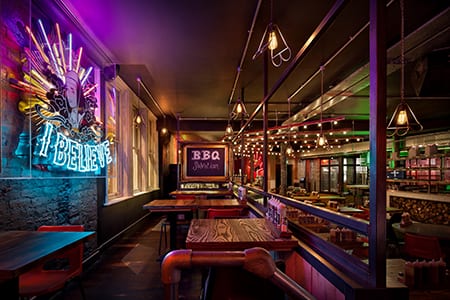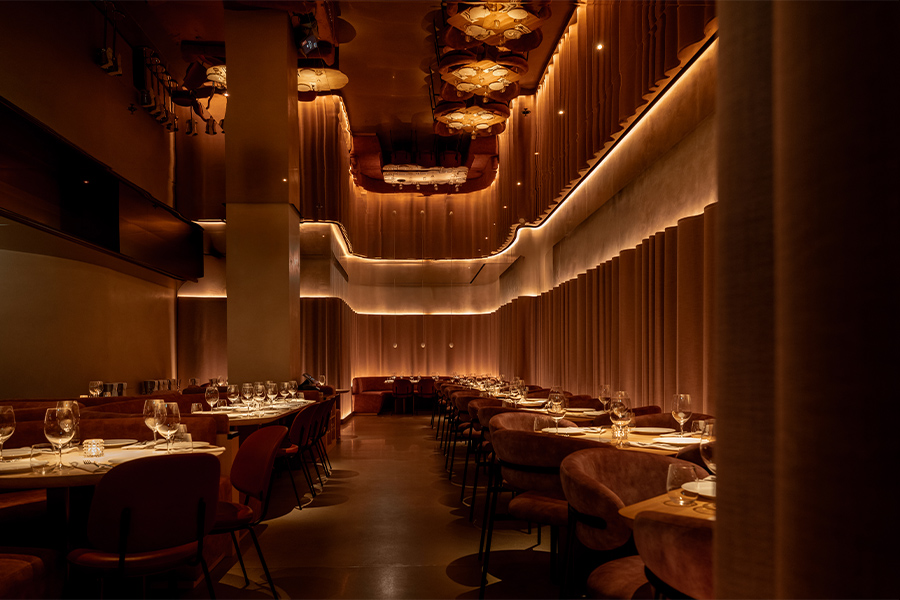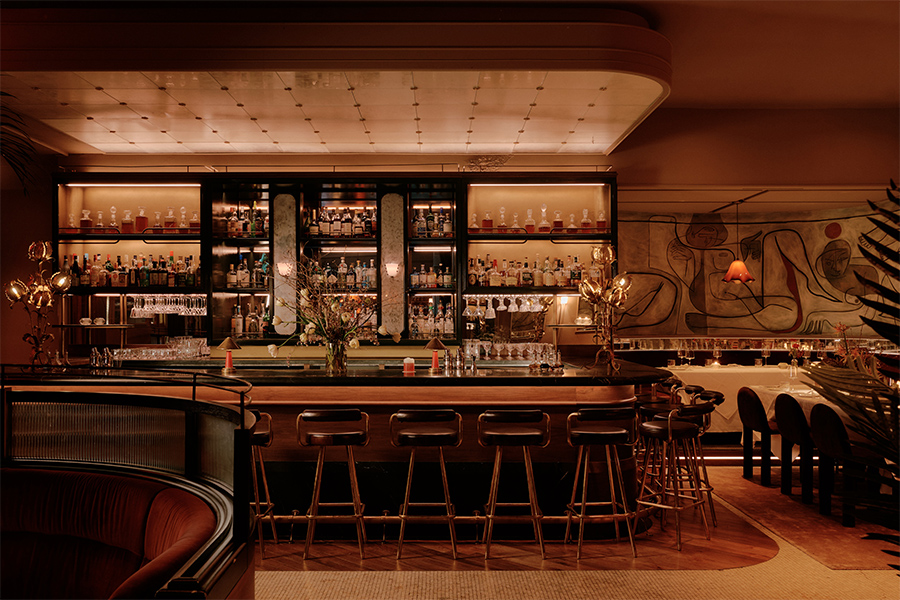Red’s True Barbecue, the second of its kind in the UK, introduces the American low-and-slow with punch and humor. “We took a lot of inspiration from the client-the guys themselves,” says designer Jordan Littler of London-based Blacksheep. “Americanizing it wouldn’t be authentic, because the guys aren’t American. It’s their version of barbecue.”
Based on the restaurant’s first location, the owners wanted the kitchen in full view to showcase the meat. “They are really passionate about having everything on display and not hiding anything,” Littler says. “It’s the idea that food is the heart of the restaurant.” The open kitchen takes its place in the center of the room, and the rest of the space circulates around, separated by a white mesh chain. The focus on the meat reappears in the dining space with a slightly perverse slant.

“When we started looking into barbecue, we thought about how there is something quite primal about having a barbecue restaurant,” explains Littler, who noted barbecue’s messy reputation. With the cuisine’s origination in mind, the team brought butchery into the design. Blackened timber paneling, exposed brickwork, and butcher’s curtains hint at the raw nature of the food. “We didn’t want to go too far, since we’re going for that balance of just being edgy enough,” he adds.

Flanked by two industrial smokers, there is a stainless steel mortuary table in the “rub room,” which looks through glass walls onto the kitchen and the meat. Eviscerate forks, which are used in poultry butchery, became lampshades. The seating complements the raw look with stainless steel benches affixed with leather seats.

“This design has this darker, sinister appeal,” Littler says. For the budding restaurant brand, the team helped reinforce an identity that can easily vary in design. However, one aspect that carries across the different locations is religion. “With religion, there is the idea of light and dark, and we wanted to bring a sinister side to it as well into the design,” the designer explains. Large, neon pieces of lit artwork broadcast statements like, “The Good Book,” and “Holy Smokers” in bright pink or blue. “They wanted to be quite edgy and they wanted to test people’s perceptions and the waters and see what they can get away with,” Littler adds.

This gritty approach to religion merges with the dark appeal of a twisted fairground. Lit with lights reminiscent of those at a fair, the bar uses the idea of a merry-go-round for its front. The spray-painted, graffiti-like art on the bar bring to mind Littler’s concept of an evil carnival. “It’s meant to create a bit of a story, make it feel a bit more personal, and create into a strong focal point for the restaurant,” he says. A raised “pulpit” for a DJ sits aloft in the bar. “He’s almost preaching to the restaurant or the bar at night,” Littler says. “It felt like religion and fairground all in one.”
.jpg)
Red’s last laugh comes in the bathrooms, where exposed plaster and open pipework mask the surprise that are the stalls themselves-ornate, church-style confession booths, complete with frosted glass windows. “We didn’t really want to have a bad seat in the house,” Little says.




